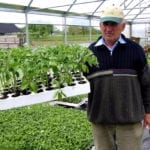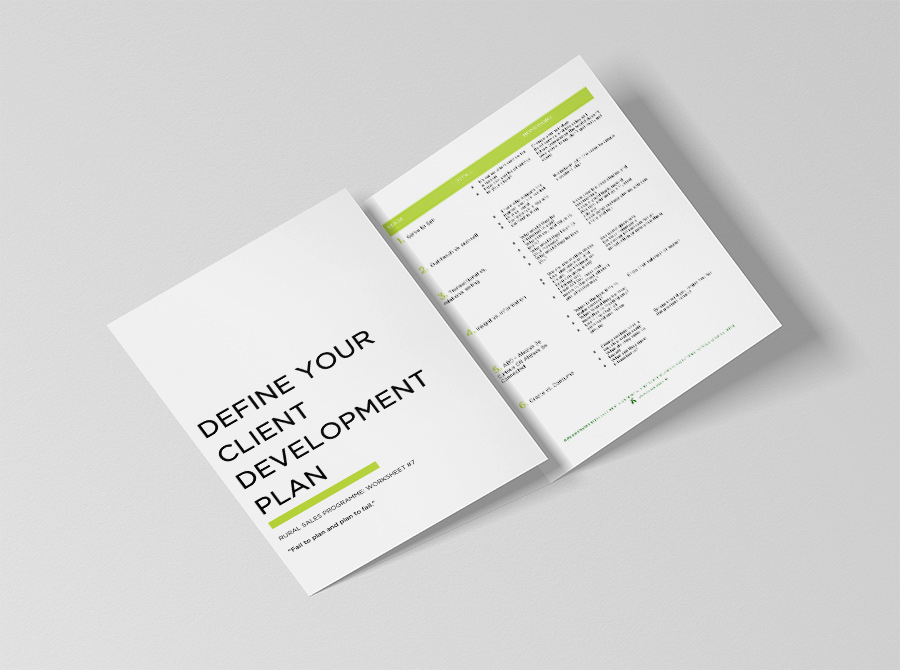NZ Ag: Why We Need To Stop Using The Words Value Add
Value add is a term tossed around so much it’s become meaningless and tiresome. People use it in the hope it will excuse them from the cognitive challenge of deeper thinking and problem solving. Or they use it to project the false belief that they’ve got all this value stuff in hand. It’s a simplistic statement with those that use it in danger of being perceived as rather simplistic themselves. Very few can articulate the add bit. Like the catch cry “we just need to tell our story better”, value add is easy to say but far harder to execute. That’s why I’m calling for a moratorium on the term “value add” in NZ Ag until we’ve worked out how we properly define it and apply it.
The thing is value add has never been a singular business concept. Truly sustainable and defendable value add is all about a Value Equation. We call it an equation because itis multi-dimensional and multi-faceted. Layers within a company’s value equation create depth, resilience and sustainable competitive advantage. Call it your modern day moat. One factor can be easily challenged or overturned by competitors. Having many factors in your armoury makes this situation much less likely.
When you buy a house you don’t just make a decision based on one factor alone. You will consider a multitude of factors which will differ greatly depending on the person and budget you might have. These include things such as price, location, school zones, indoor-outdoor flow, street appeal, neighbours, light, space, re-sell value, potential and feel or vibe.
Same for your customers. They will have a list of criteria, or factors, they will use to evaluate you consciously and subconsciously. Price, service, credibility, people, relevance, chemistry, fit, likeability, partnerships, associations, track record, reputation, trust, proprietary knowledge, usability and so on. More often than not it will be the emotional factors that dominate and the rational ones that justify. Meeting one of this drivers isn’t going to win you the business. You need to find out which ones motivate them most and adapt your offer and positioning accordingly.
Last week I attended the Future Farms Conference as part of the CEDA-led ASB Agri Investment Week (a great week and initiative for those that want to learn and help future proof the massive challenges NZ Ag faces). Lain Jager, former CEO of Zespri, nailed it when he challenged representatives of NZ Ag speaking on stage by asking if we really have a sustainable point of difference. This provocative and confronting question got me thinking. A “point of difference”, which has been drilled into all of us as marketers and business owners, implies by it own definition singularity when in fact a sustainable point of difference is all about a deeper set of factors that make up an overall value equation. The point is there’s no one point or reference.
Another way of thinking about this is looking at how we achieve a sustainable point of difference to dominate our sector and competitors. Without getting all Sun Tzu, one of the best ways to do this is to employ a parallel attack as Colonel John Warden coined in the Iraq War. This is where you deplete your enemy’s will and ability to respond. “The sum of attacks is greater than individual parts”.
Apple employed parallel attacks very successfully in their early years but more recently they’ve lost their sparkle and have become easier to replicate with the likes of Samsung on their heels. They seem to have stopped using parallel attacks (iTunes, iPod, IPad, Iphone) which in the past has served them so well as one of the world’s most innovative and profitable companies. The best brands keep coming at you with new ideas and innovations to keep customers buying whilst keeping competitors away.
It’s naive to think any of us can complete on one factor in our our rural businesses. We have to compete on many. Having the lowest price or best range isn’t enough. Differentiating on branded service or having good people isn’t going to do it either. Competing on a set of value drivers in’t easy, it’s hard which is why so few companies succeed in doing it. By creating a number of irreplicable factors to your value equation you create formidable barriers to entry that others find will hard to match or challenge.
I, and others I know, have high hopes for the Beef +Lamb NZ Red Meat Story with a wish that it will reflect a value equation of truths we all know as a proud red meat producing nation: grass-fed, free range, small holdings, no antibiotics, no GMO, no hormones, naturally raised. However the Atkins Ranch guys might already be on the money (799 views on YouTube seems low eyeballs for such a great story). We’ll have to wait and see.
The next question will be who and how will this red meat story be brought to life? How does it fit in with the larger picture of NZ Inc? If the Italian and French are known for their food, so should we. As Steve Maharey suggested New Zealand needs to become a “food nation”. Our farmers have to become foodies who are passionate about their product which flows through to chefs, consumers and critics. It can’t stop at the gate.
So how do we bring this to reality? A good movie has many interwoven story lines with the development of rich, complex characters. We need to provide that same depth and complexity in our own brand narratives. Not singular basics or givens. A brand story should be the translation of that value equation for those agribusiness companies who want to differentiate in a meaningful way so they can draw customers in.
And just like we tell our kids when they get into a tight spot or when we find ourselves as adults in challenging, character-building situations like divorce, business failure or health issues – it’s rarely attributed to one single factor. Success and failure can always be attributed to a number of connecting factors.
Here’s an example:
Bill Gates didn’t just become one of the richest men on the planet because he was clever. He was very fortunate to be born at a time when computers were just coming online. His school was one of very few at that time to start a computer club which allowed him to get access to the local mainframe computer using a time sharing terminal. He was fortunate enough that the Lakeside school mothers had the resources and time to raise money to the fund computer fees. Gates would sneak out after bedtime to University of Washington by foot to do programming between 3-5 am. (Later his Mother said “We always wondered why is was so hard go him to get up in the morning”).As Malcolm Gladwell talks about in his book Outliers (page 50-55) Gates’ success wasn’t due to his “sheer brilliance, ambition and guts.” It wasn’t one thing. It was many. Gates dropped out of Harvard after his first year and the rest, as they say, is history.
The often referenced value proposition, like value add, isn’t one single thing either. Like all great brands, a true value proposition is multi-faceted.
Because of this any rural company’s value equation needs to be perfectly orchestrated because of the number of inter-dependent parts. Having the best glossiest marketing material isn’t going to help if your sales team are lousy at following up or aren’t respected by their customers. Having a great brand isn’t useful if you don’t have the right distribution channel or no one has heard about you. Talking strategy but never executing to achieve the necessary speed to market isn’t going to help either. It’s all about getting the formula right. And it’s such a big reason why so many rural companies fail because it’s difficult and challenging to orchestrate so many moving parts at the right time and right place.
However in this day of highly educated and discerning customers you need to get your orchestration right. They expect you to meet their many expectations across product enquiry, customer experience, billing or even follow up (a great opportunity that so few companies leverage). Uncovering these expectations and drivers means that you’ll need to dig deeper working in collaboration with your customers so you’re not guessing.
I’ll share a personal analogy to help.
I sell items on TradeMe which might surprise a few of you that know me. I don’t sell on TradeMe to make money alone. I sell for a number of reasons which I’ll list in order of importance (an important discipline when defining value equations whose order and priority will differ depending on the customer persona or segment you’re dealing with):
Reason 1: It de-clutters our home.
Reason 2: I enjoy the selling process and am fascinated by the buyer psychology associated with it (I always use $1 reserves).
Reason 3: As a family we have a rule where we always sell one item before we buy another.
Reason 4: Someone else gets to re-use or enjoy something we did which is one less item in the rubbish tip and one less item the world’s depleted resources has to produce.
Reason 5: I make a bit of money along the way.
5 contributing factors make up my value equation when most might naively assume I’m listing items to free up some cash. The problem is it is dangerous to assume anything in business, just as it is as people.
One of the best pieces of advice I got from my Kellogg Rural Leadership Programme was when our Professor, Patrick Aldwell, told us: “Don’t assume. You don’t know their back story.” A powerful lesson and value to live by that if I’m honest I still struggle with but hey we’re all work in progresses right. We should never assume we know unless we actually do.
So we might think we know what our customers want, need or value but do we reallyknow? Thinking and knowing are two very different things. That’s why we place such a big importance on stakeholder interviews or farmer panels to validate or challenge internal thinking or bias which can be strong and misleading in both forms. We also use panels and interviews to create and validate value equations because bias can be blinding and assumptions can make “an ass out of you and me” (ASSUME). Better to know than to think. Fact or opinion? Evidential or anecdotal? We have to ask to make sure. If we don’t it we can be mistaken leading to expensive and costly rural marketing campaigns that underperform and set us back.
Making rural marketing investments in the absence of customer insights and the customer voice is dangerous, irresponsible and short sighted. Your customers, and potential customers, will have their very own value equation of factors behind their decision to buy. This means you need to have one too in the hope that you can meet and align with theirs.
The best thing we can do as New Zealand agribusiness companies to be sustainable is to create our own proprietary Value Equations, preferably with our customers help (we help many clients produce their own value equation so their proposition is that more resilient by validating and testing it with customers. What are the factors you could own and differentiate your product or service on? How can they be unique to you and your customers? How will you demonstrate and deliver them? How easy are they to replicate as a whole?Getting the recipe right is all about ensuring you have the right ingredients in the first place. Then you can bake the cake that everyone wants to eat. In simple terms, it’s your secret formula. One that’s intangible yet very powerful when executed well.
So when you next here someone mention “value add” stop and challenge them. But better than that, help them understand what it really means.
When we see more value equations and hear less about value add in NZ Ag, that’s when we’ll know we’ve got the formula right.
+++
What are the factors that could make your rural company’s value equation unique and different? How can you get your formula right?





